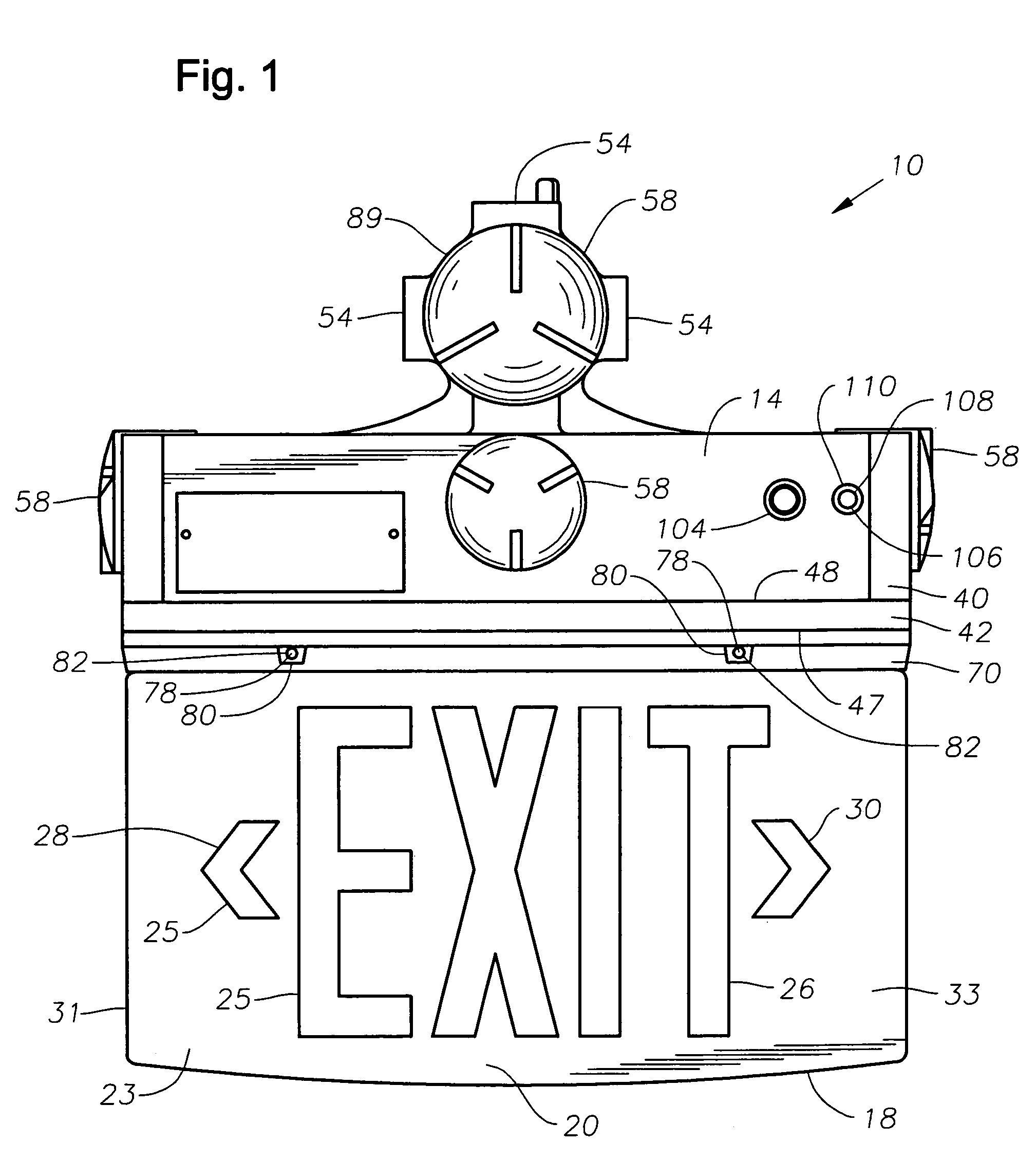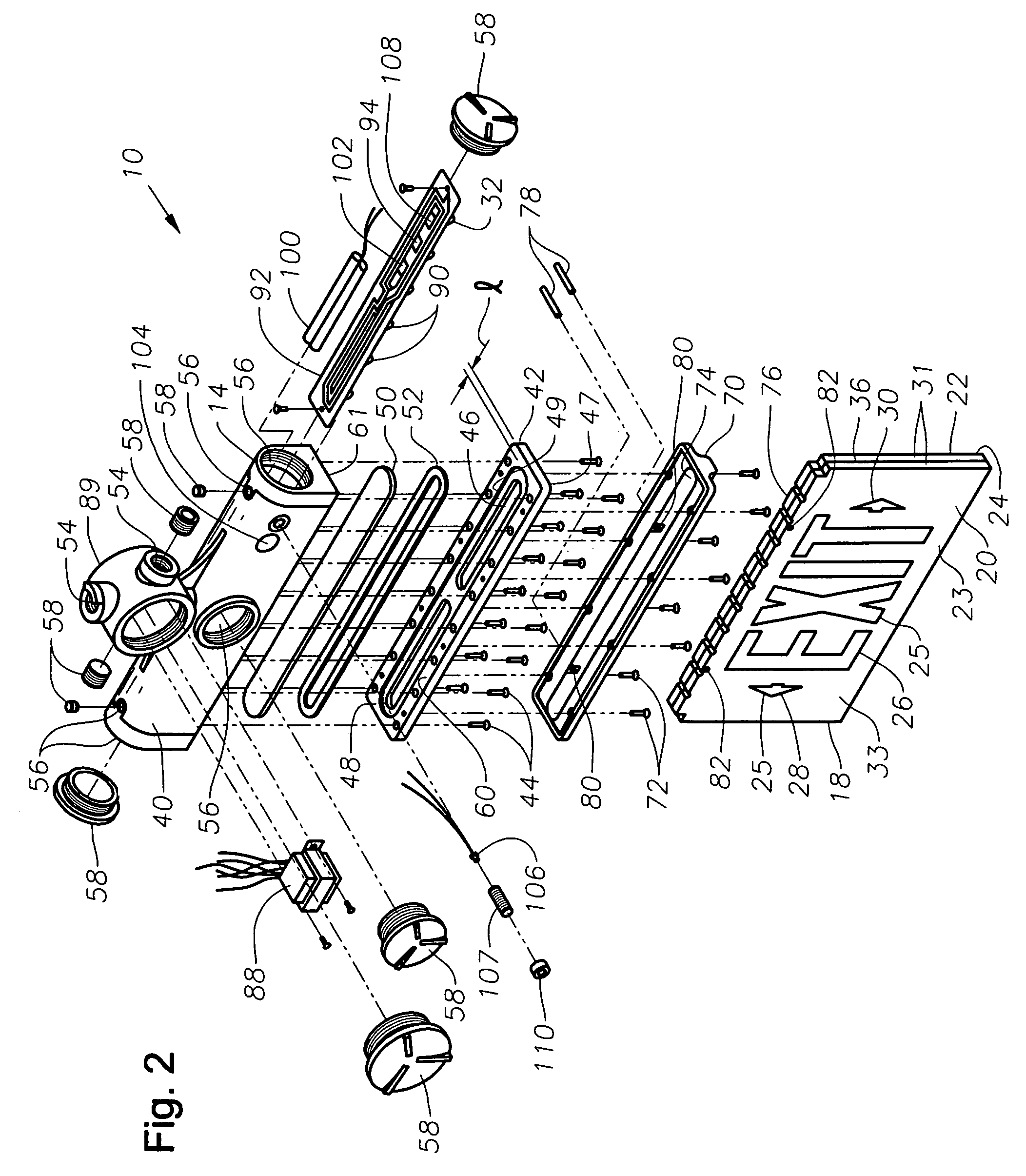Hazardous-location-rated exit sign
a technology of hazardous location and exit signs, applied in the direction of illuminated signs, display means, instruments, etc., can solve the problems of affecting the integrity of explosion-proof signs, requiring maintenance and upkeep, and incandescent lamps being subject to burnou
- Summary
- Abstract
- Description
- Claims
- Application Information
AI Technical Summary
Benefits of technology
Problems solved by technology
Method used
Image
Examples
Embodiment Construction
[0024]Referring to FIGS. 1 and 2, a preferred embodiment of the invention is an exit sign 10 suitable for use in locations deemed hazardous due to the presence or potential presence of flammable vapors or gases or combustible dusts. Exit sign 10 is preferably designed and arranged to be certified for use in NEC Class I Division 1 and 2, Groups C and D, Class I Zone 1 Group IIB, and Class II Division 1 Groups E, F and G. More preferably, exit sign 10 may also be certified for use in Class I Zones 0, 1 and 2 Groups IIA, IIB plus hydrogen, and IIC areas. More preferably still, exit sign 10 is also certified for use in Class III areas. Exit sign 10 preferably complies with UL Standard 844. UL Standards 844, 1604 and 2279 are incorporated herein by reference. The exit sign 10 preferably includes an explosion-proof housing 14 and a sign panel 18 having generally planar first and second sides, 20, 22, respectively (FIG. 2).
[0025]If the exit sign 10 is arranged for parallel mounting to a wa...
PUM
 Login to View More
Login to View More Abstract
Description
Claims
Application Information
 Login to View More
Login to View More - R&D
- Intellectual Property
- Life Sciences
- Materials
- Tech Scout
- Unparalleled Data Quality
- Higher Quality Content
- 60% Fewer Hallucinations
Browse by: Latest US Patents, China's latest patents, Technical Efficacy Thesaurus, Application Domain, Technology Topic, Popular Technical Reports.
© 2025 PatSnap. All rights reserved.Legal|Privacy policy|Modern Slavery Act Transparency Statement|Sitemap|About US| Contact US: help@patsnap.com



